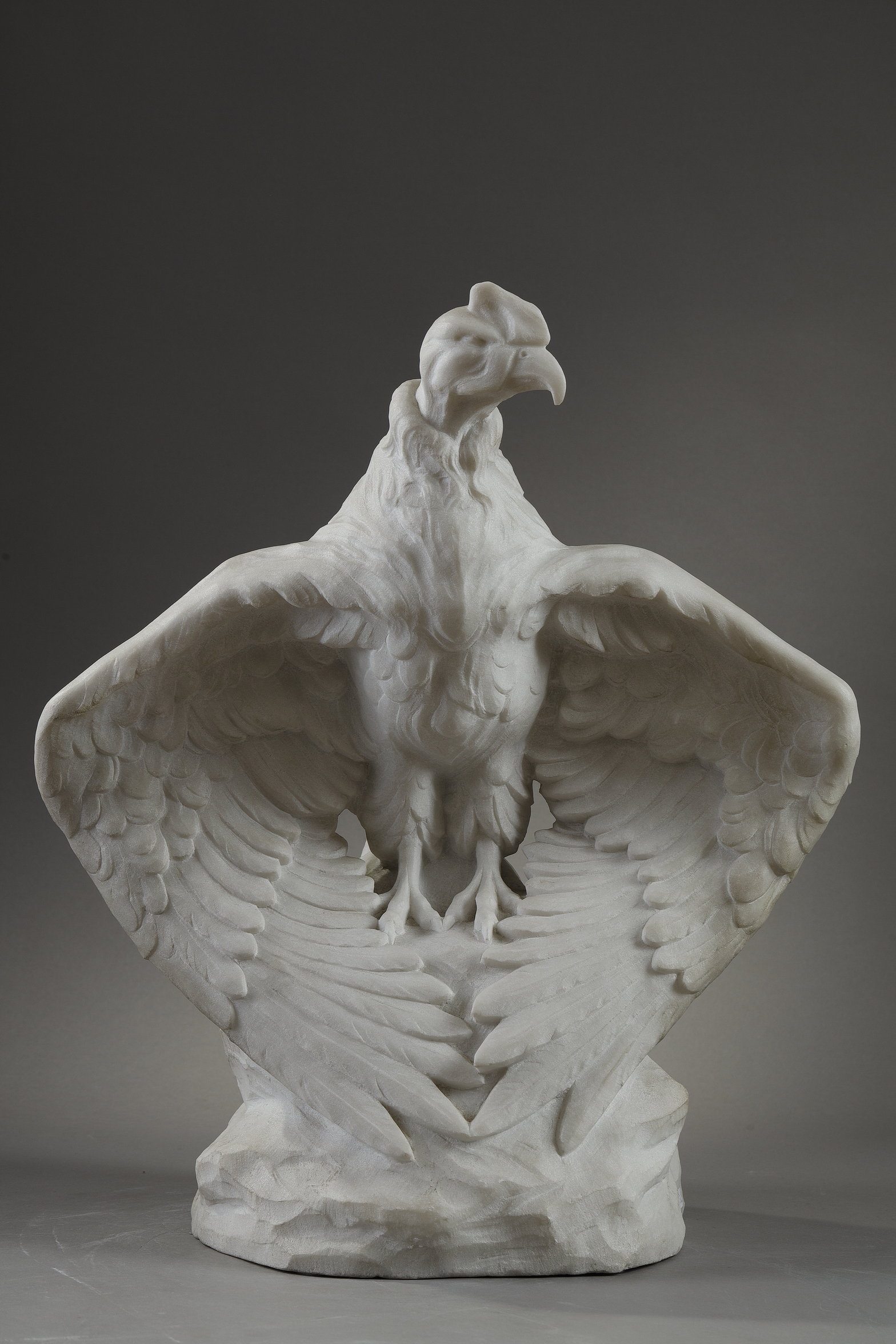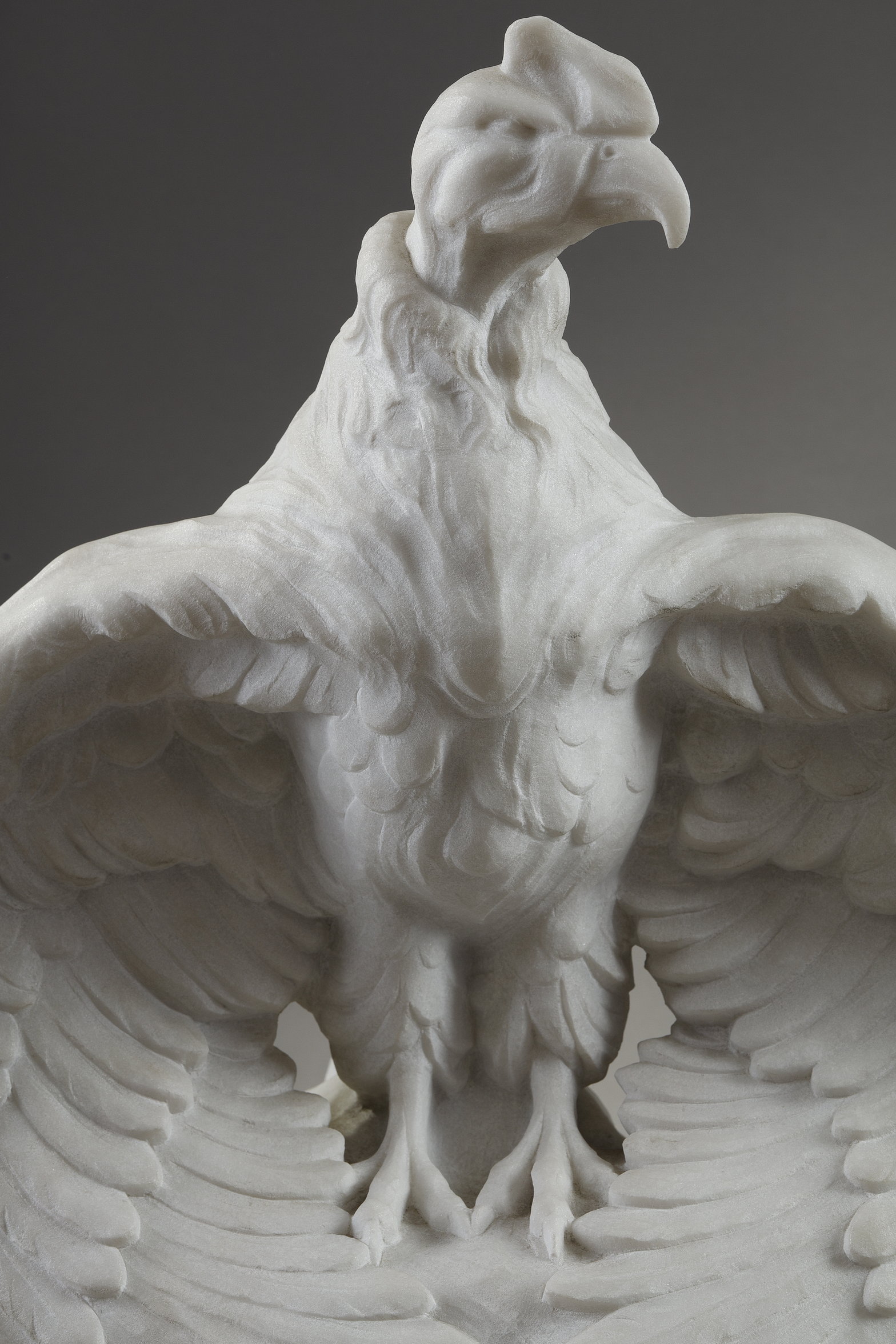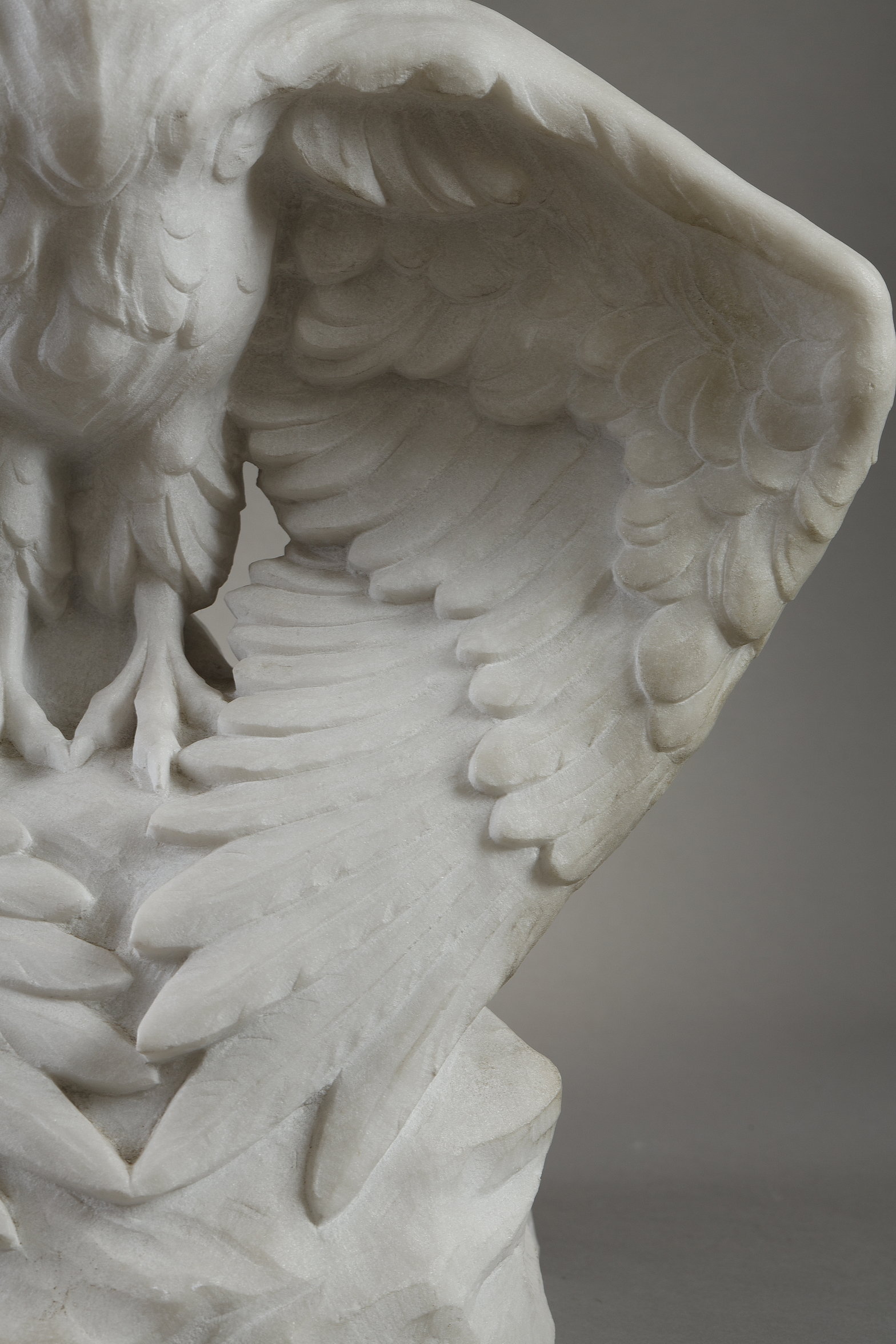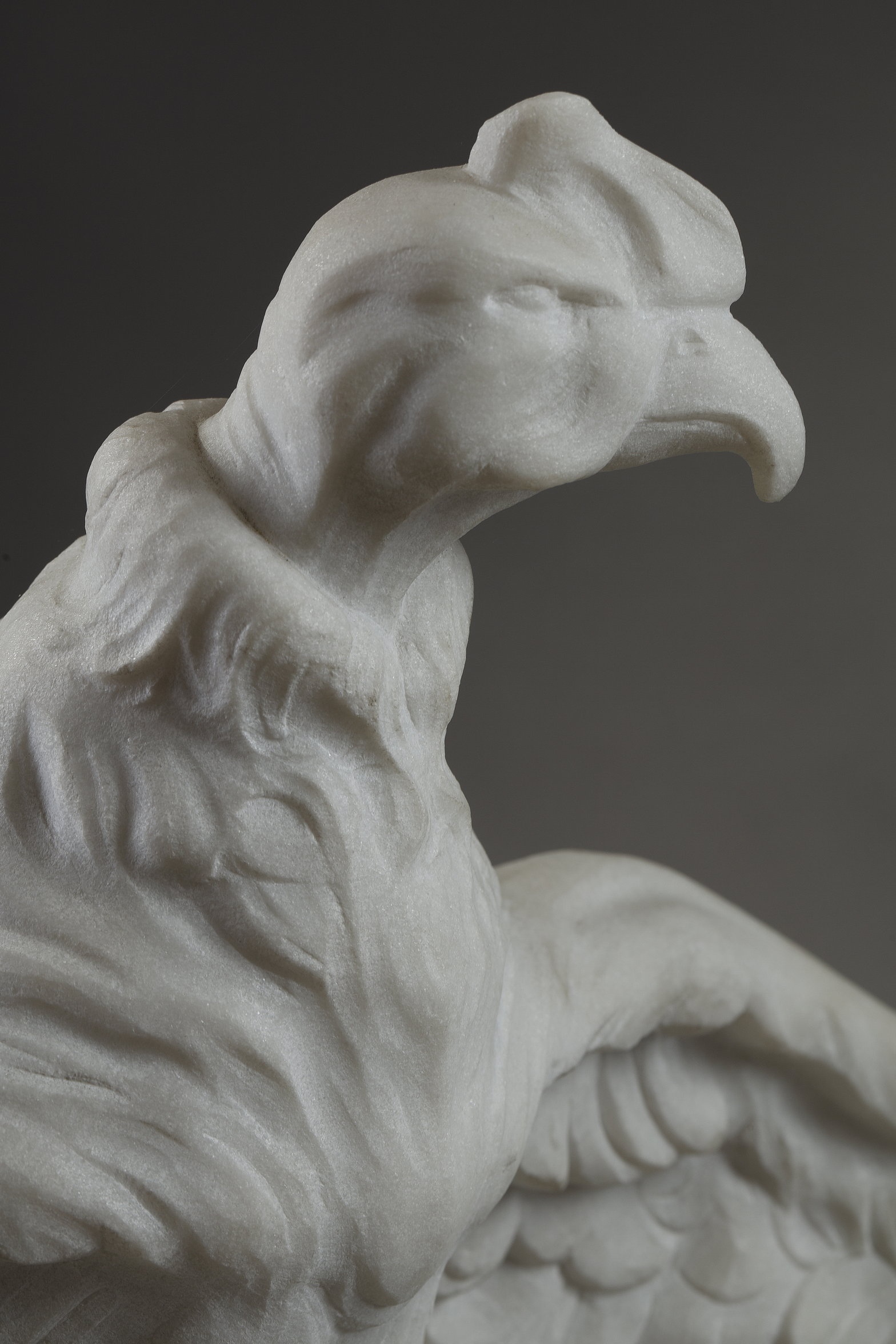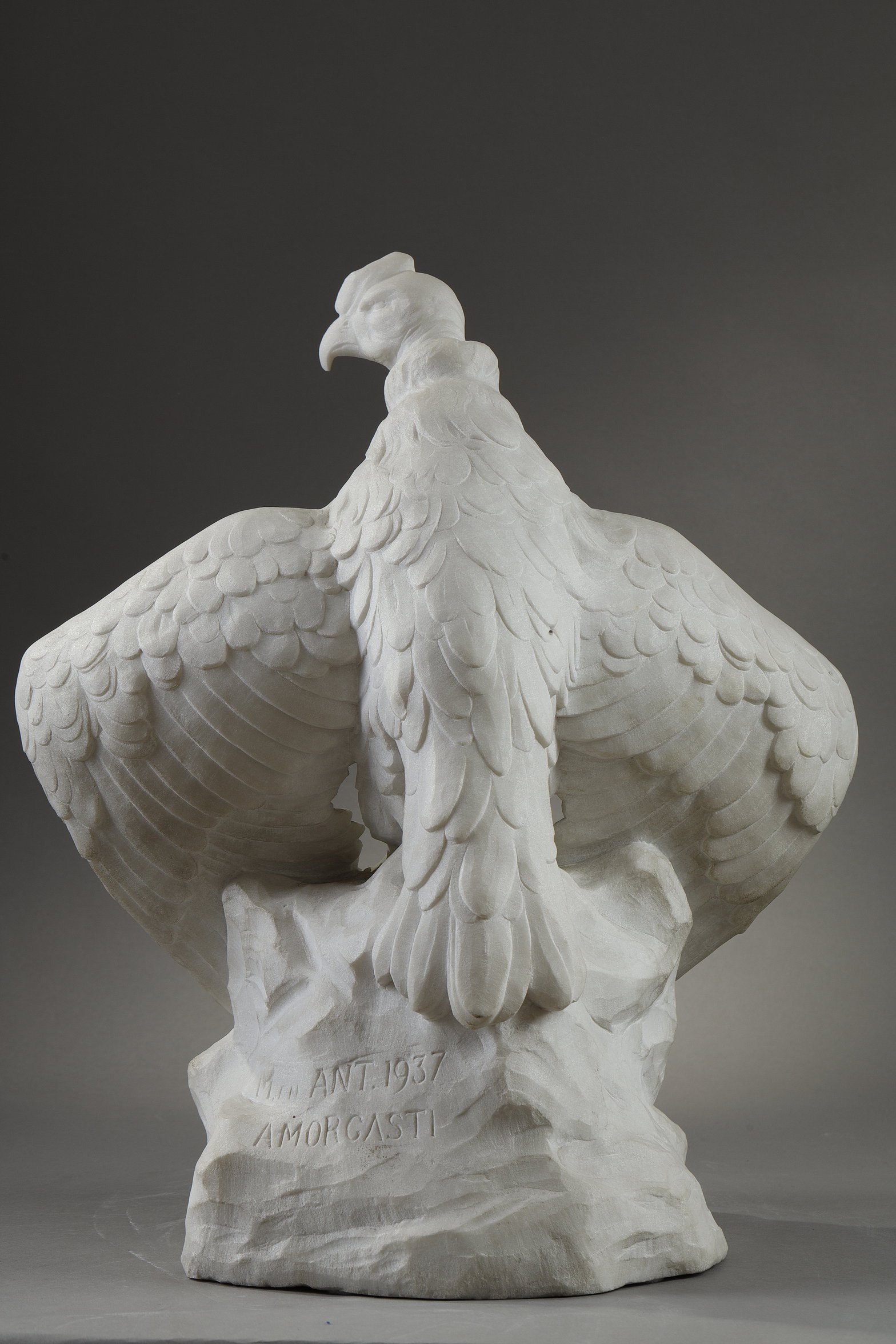THE CONDOR
ANTONIO & MARCEL AMORGASTI (1880-1942)
Italian/Belgian
Date : 1937
Dimensions : 47,5 x 41 x 24,5 cm
Material : White Carrara marble
Signature : “M. EN ANT. AMORGASTI 1937”
Historical and artistic context
This striking marble sculpture by Antonio (1880–1942) and Marcel (1908–1985) Amorgasti depicts a Condor poised for flight. Its wings are almost fully unfurled, and the bird’s body brims with restrained energy. Carved in 1937 from fine white Carrara marble, the work reveals exceptional anatomical precision and sculptural finesse.
The Condor is rendered with striking realism. Its entire body conveys a sense of restrained tension, as if caught in the very moment before flight. The meticulous detailing of the feathers emphasizes the animal’s latent power and natural grace. The result is a sculpture of controlled vitality and remarkable sculptural clarity.
In 1937, Marcel collaborated with Antonio on this striking marble condor—based on Antonio’s design—that closely echoes Josué Dupon’s monumental bronze created in 1908. While Antonio’s direct involvement in Dupon’s work is unconfirmed, the resemblance reflects his proximity to Antwerp’s leading animal sculptors.
Condor was exhibited the same year at the Brussels Exhibition of Animal Art, further affirming the Amorgastis’ standing as leading figures in Belgian animal sculpture. This rare collaboration between father and son reflects their shared technical mastery and artistic sensibility.
More than a simple representation of wildlife, Condor is a powerful testament to intergenerational artistry, merging natural observation with expressive form. It stands as a superb example of early 20th-century animal sculpture in marble.
Literature :
- PANZETTA, A. Nuovo Dizionario degli Scultori Italiani dell’Ottocento e del primo Novecento, 3e éd. Vol.1. Umberto Allemandi & C., Italie, 2003. p.28
- ENGELEN, C. MARX, M. La Sculpture en Belgique à partir de 1830,Tome I. Engelen – Marx, Louvain, 2006. p. 44-57

